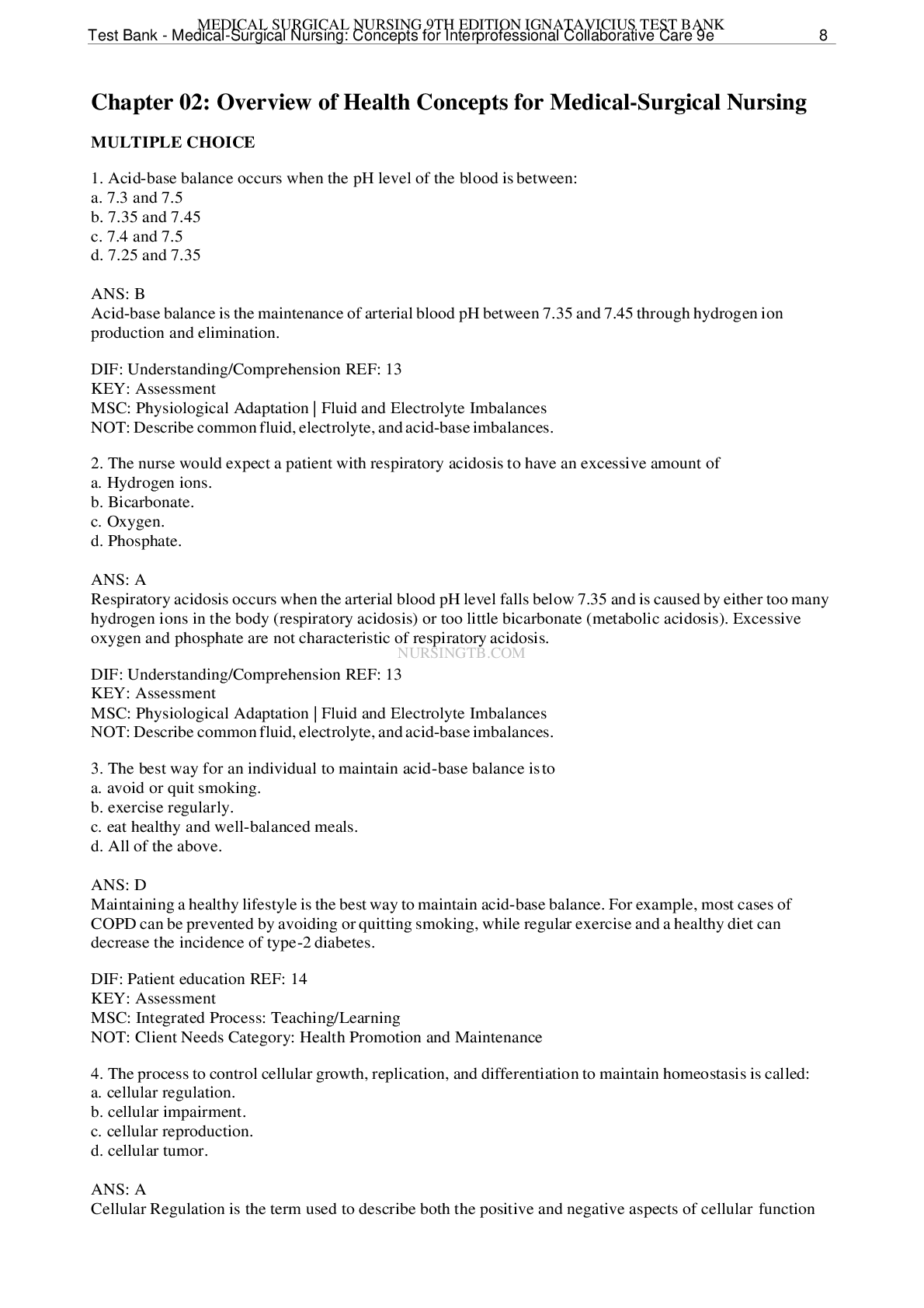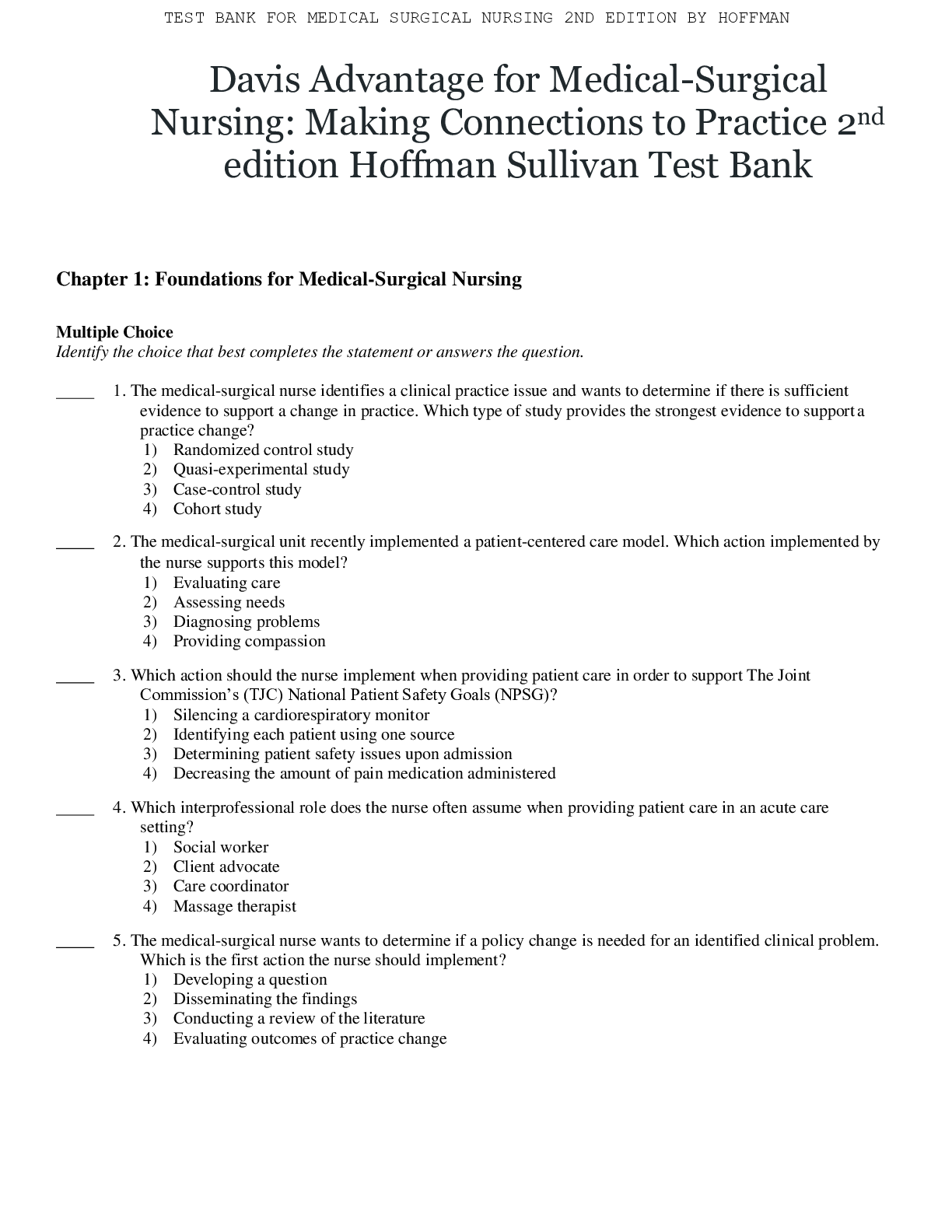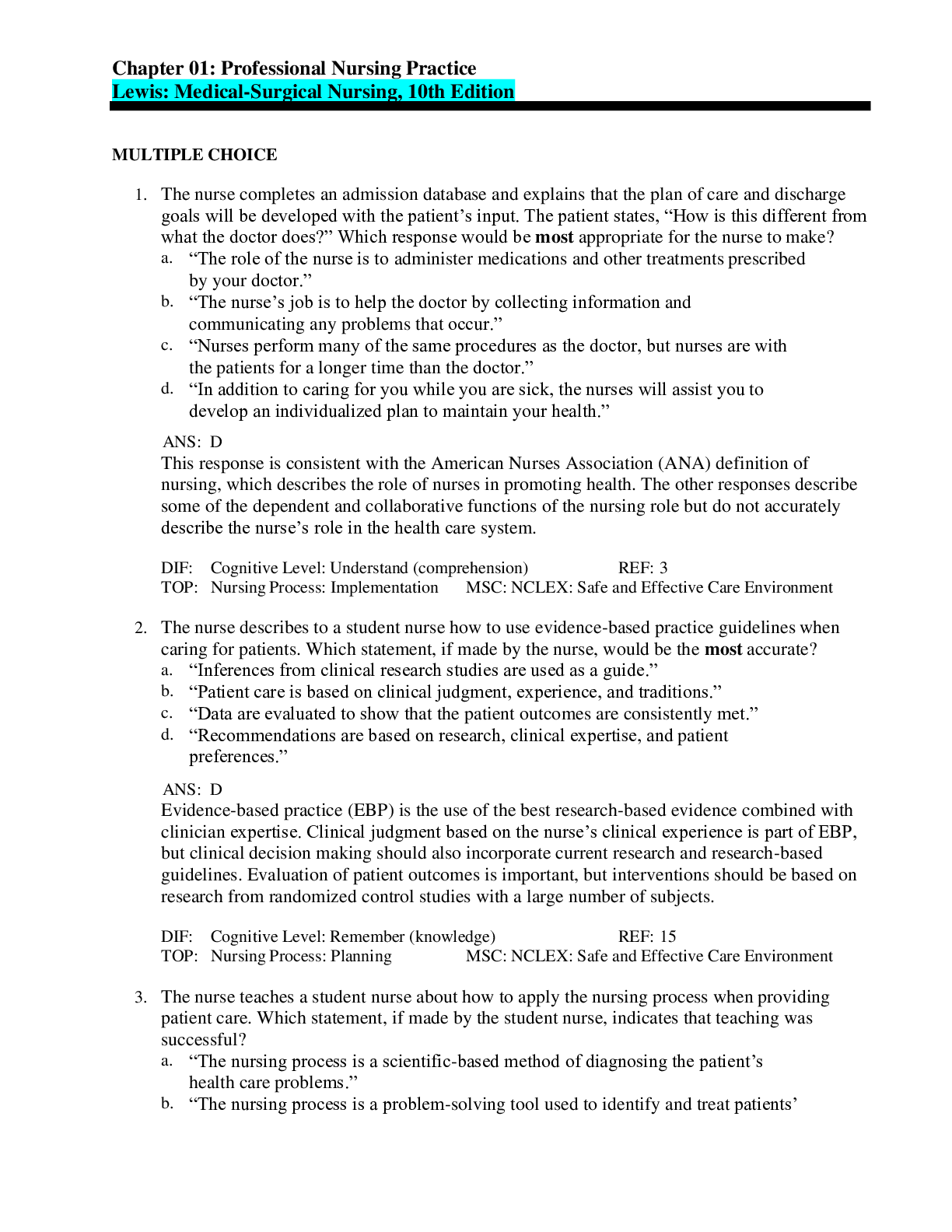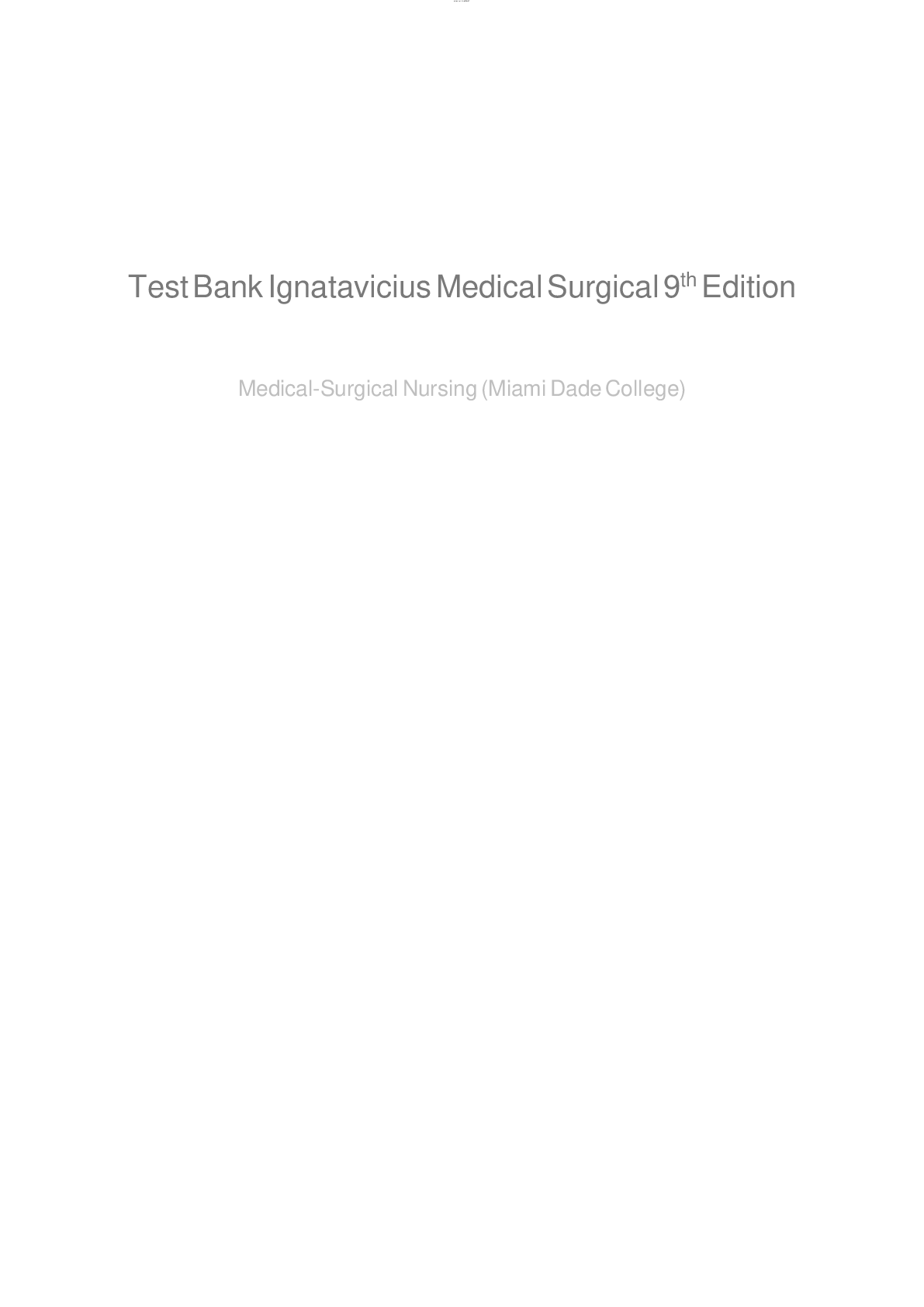*NURSING > TEST BANK > TESTBANK FOR MEDICAL SURGICAL NURSING ; CONCEPTS OF INTERPROFESSIONAL COLLABORATIVE CARE 9TH EDITIO (All)
TESTBANK FOR MEDICAL SURGICAL NURSING ; CONCEPTS OF INTERPROFESSIONAL COLLABORATIVE CARE 9TH EDITION BY IGNATAVICIUS
Document Content and Description Below
Chapter 01: Overview of Professional Nursing Concepts for Medical-Surgical NursingMULTIPLE CHOICE1. A nurse wishes to provide client-centered care in all interactions. Which action by the nurse bestde... monstrates this concept?a. Assesses for cultural influences affecting health careb. Ensures that all the clients basic needs are metc. Tells the client and family about all upcoming testsd. Thoroughly orients the client and family to the roomANS: ACompetency in client-focused care is demonstrated when the nurse focuses on communication, culture, respect,compassion, client education, and empowerment. By assessing the effect of the clients culture on health care,this nurse is practicing client-focused care. Providing for basic needs does not demonstrate this competence.Simply telling the client about all upcoming tests is not providing empowering education. Orienting the clientand family to the room is an important safety measure, but not directly related to demonstrating client-centeredcare.DIF: Understanding/Comprehension REF: 3KEY: Patient-centered care| culture MSC: Integrated Process: CaringNOT: Client Needs Category: Psychosocial Integrity2. A nurse is caring for a postoperative client on the surgical unit. The clients blood pressure was 142/76 mmHg 30 minutes ago, and now is 88/50 mm Hg. What action by the nurse is best?a. Call the Rapid Response Team.b. Document and continue to monitor.c. Notify the primary care provider.d. Repeat blood pressure measurement in 15 minutes.ANS: AThe purpose of the Rapid Response Team (RRT) is to intervene when clients are deteriorating before theysuffer either respiratory or cardiac arrest. Since the client has manifested a significant change, the nurse shouldcall the RRT. Changes in blood pressure, mental status, heart rate, and pain are particularly significant.Documentation is vital, but the nurse must do more than document. The primary care provider should benotified, but this is not the priority over calling the RRT. The clients blood pressure should be reassessedfrequently, but the priority is getting the rapid care to the client.DIF: Applying/Application REF: 3KEY: Rapid Response Team (RRT)| medical emergenciesMSC: Integrated Process: Communication and DocumentationNOT: Client Needs Category: Physiological Integrity: Physiological Adaptation3. A nurse is orienting a new client and family to the inpatient unit. What information does the nurse provide tohelp the client promote his or her own safety?a. Encourage the client and family to be active partners.b. Have the client monitor hand hygiene in caregivers.c. Offer the family the opportunity to stay with the client.d. Tell the client to always wear his or her armband.ANS: AEach action could be important for the client or family to perform. However, encouraging the client to beactive in his or her health care as a partner is the most critical. The other actions are very limited in scope anddo not provide the broad protection that being active and involved does.DIF: Understanding/Comprehension REF: 3KEY: Patient safetyTest Bank - Medical-Surgical Nursing: Concepts for Interprofessional Collaborative Care 9e3Downloaded by No One ([email protected])lOMoARcPSD|4653974 MSC: Integrated Process: Teaching/LearningNOT: Client Needs Category: Safe and Effective Care Environment: Safety and Infection Control4. A new nurse is working with a preceptor on an inpatient medical-surgical unit. The preceptor advises thestudent that which is the priority when working as a professional nurse?a. Attending to holistic client needsb. Ensuring client safetyc. Not making medication errorsd. Providing client-focused careANS: BAll actions are appropriate for the professional nurse. However, ensuring client safety is the priority. Up to98,000 deaths result each year from errors in hospital care, according to the 2000 Institute of Medicine report.Many more clients have suffered injuries and less serious outcomes. Every nurse has the responsibility toguard the clients safety.DIF: Understanding/Comprehension REF: 2KEY: Patient safetyMSC: Integrated Process: Nursing Process: InterventionNOT: Client Needs Category: Safe and Effective Care Environment: Safety and Infection Control5. A client is going to be admitted for a scheduled surgical procedure. Which action does the nurse explain isthe most important thing the client can do to protect against errors?a. Bring a list of all medications and what they are for.b. Keep the doctors phone number by the telephone.c. Make sure all providers wash hands before entering the room.d. Write down the name of each caregiver who comes in the room.ANS: AMedication errors are the most common type of health care mistake. The Joint Commissions Speak Upcampaign encourages clients to help ensure their safety. One recommendation is for clients to know all theirmedications and why they take them. This will help prevent medication errors.DIF: Applying/Application REF: 4KEY: Speak Up campaign| patient safety MSC: Integrated Process: Teaching/LearningNOT: Client Needs Category: Safe and Effective Care Environment: Safety and Infection Control6. Which action by the nurse working with a client best demonstrates respect for autonomy?a. Asks if the client has questions before signing a consentb. Gives the client accurate information when questionedc. Keeps the promises made to the client and familyd. Treats the client fairly compared to other clientsANS: AAutonomy is self-determination. The client should make decisions regarding care. When the nurse obtains asignature on the consent form, assessing if the client still has questions is vital, because without fullinformation the client cannot practice autonomy. Giving accurate information is practicing with veracity.Keeping promises is upholding fidelity. Treating the client fairly is providing social justice.DIF: Applying/Application REF: 4KEY: Autonomy| ethical principles MSC: Integrated Process: CaringNOT: Client Needs Category: Safe and Effective Care Environment: Management of Care7. A student nurse asks the faculty to explain best practices when communicating with a person from thelesbian, gay, bisexual, transgender, and queer/questioning (LGBTQ) community. What answer by the faculty ismost accurate?a. Avoid embarrassing the client by asking questions.b. Dont make assumptions about their health needs.c. Most LGBTQ people do not want to share information.Test Bank - Medica [Show More]
Last updated: 1 year ago
Preview 1 out of 625 pages
Instant download

Buy this document to get the full access instantly
Instant Download Access after purchase
Add to cartInstant download
Reviews( 0 )
Document information
Connected school, study & course
About the document
Uploaded On
Jul 07, 2021
Number of pages
625
Written in
Additional information
This document has been written for:
Uploaded
Jul 07, 2021
Downloads
0
Views
73


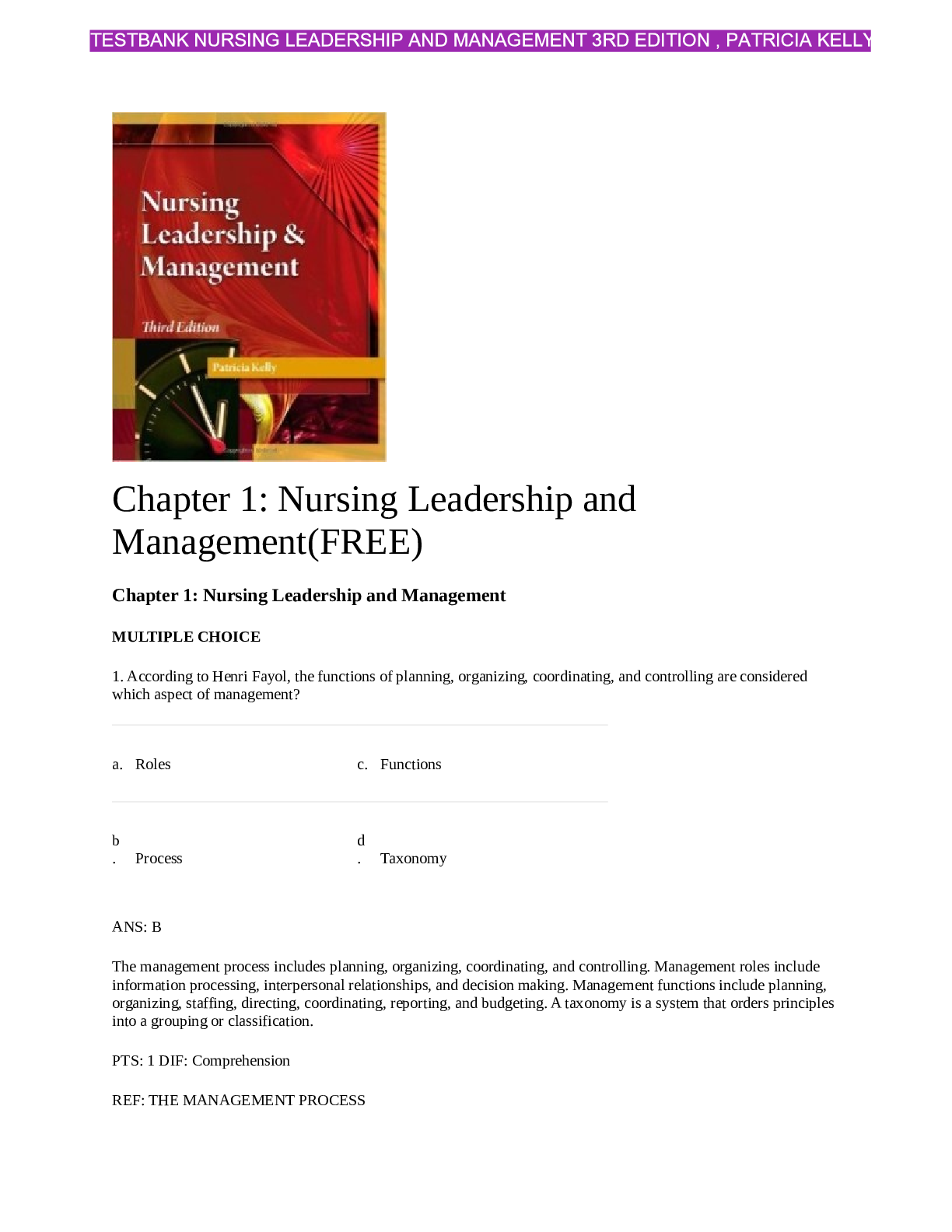


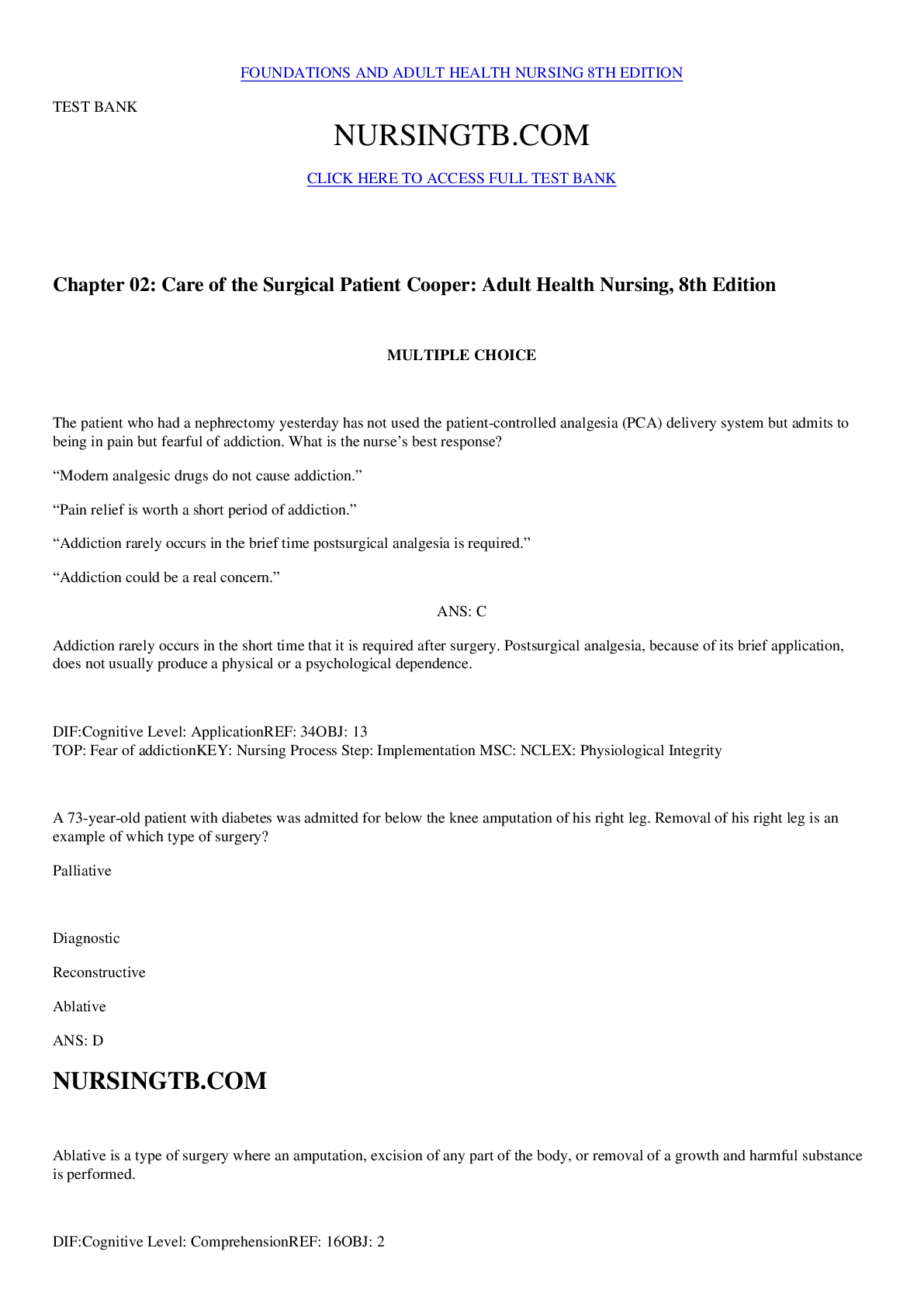




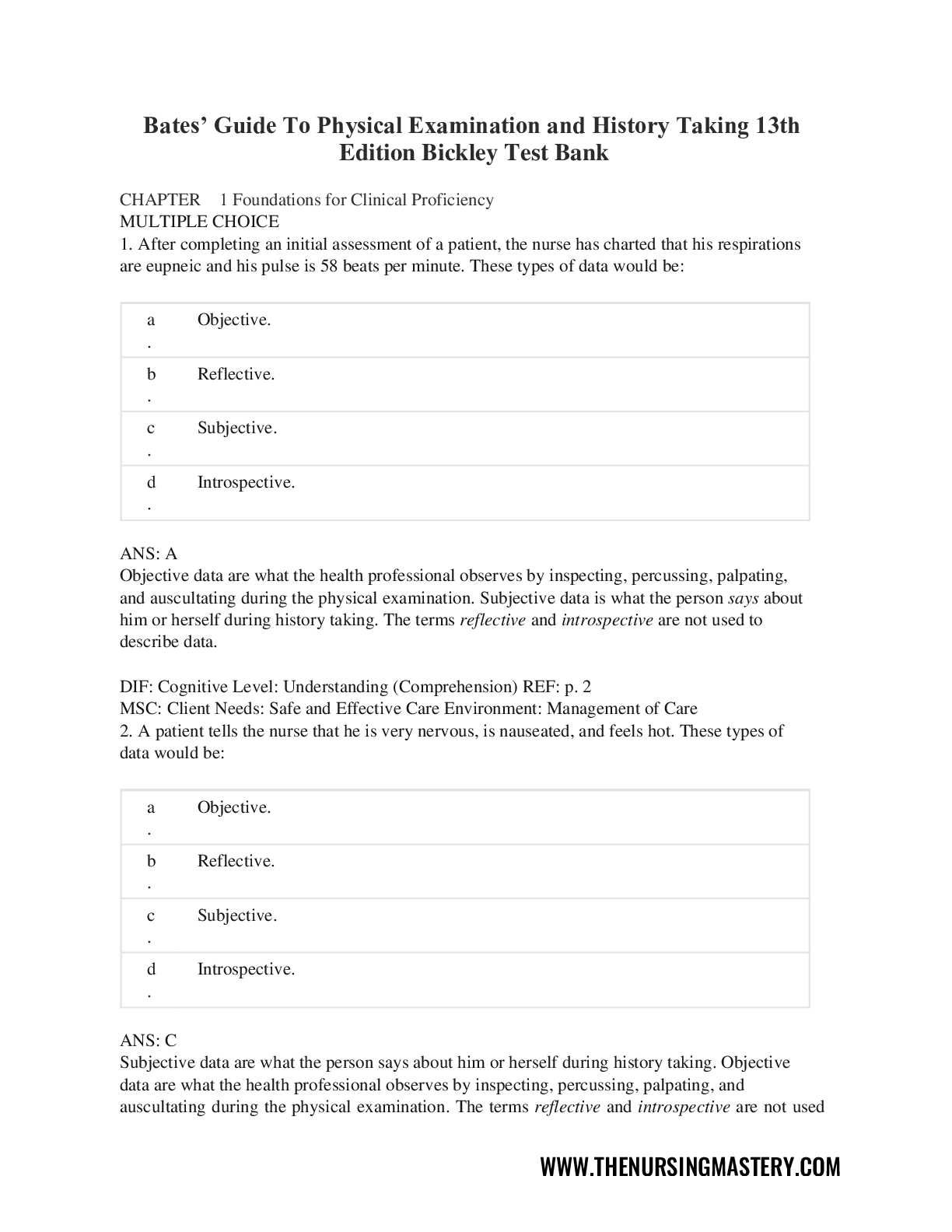
(1).png)






